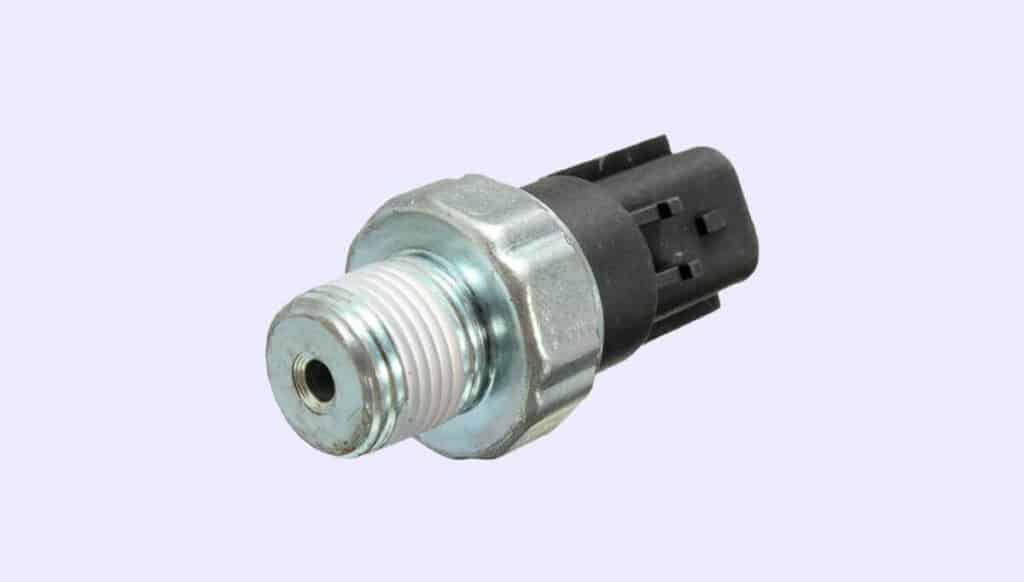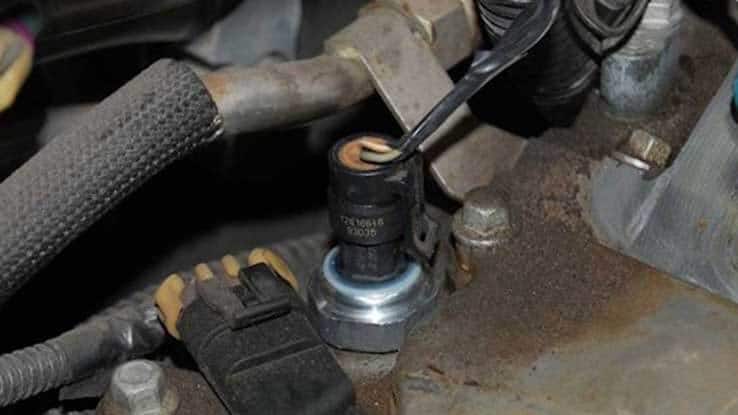Are you experiencing issues with your car’s oil pressure, such as warning lights or unusual engine noises? One potential cause could be a faulty engine oil pressure switch. In this article, we’ll take a closer look at what an engine oil pressure switch is, how to recognize signs of a faulty switch, and how to replace it.
What is an Engine Oil Pressure Switch?
An engine oil pressure switch is a small component located on the engine block that monitors the engine’s oil pressure. It sends signals to the car’s computer system to alert the driver if there is a problem with the oil pressure, such as low oil pressure or oil pressure that is too high.

How Much Will it Cost to Replace an Engine Oil Pressure Switch in Canada?
The cost of replacing an engine oil pressure switch in Canada can vary depending on the make and model of your vehicle, as well as the mechanic you choose. On average, you can expect to pay between $100 and $300 CAD for parts and labour. The labour time can take anywhere from 1 to 2 hours depending on the complexity of the repair.
What are the Symptoms of a Faulty Engine Oil Pressure Switch?
Here are some common symptoms of a faulty engine oil pressure switch:
Symptoms of a faulty engine oil pressure switch may include:
1. False oil pressure warning light: The oil pressure warning light may come on even when the oil pressure is normal, or it may not come on when the pressure is low, giving a false indication of the engine’s oil pressure.
2. Inconsistent oil pressure readings: The oil pressure gauge may show fluctuating or erratic readings, making it difficult to determine the actual oil pressure.
3. Oil leaks: A damaged or malfunctioning oil pressure switch may cause oil to leak around the switch or from its electrical connector.
4. Engine performance issues: If the oil pressure switch is not accurately relaying information to the engine control module (ECM), it can lead to incorrect adjustments in engine timing and fuel delivery, resulting in reduced performance or even engine damage.
5. Engine noise: If the oil pressure switch fails to alert the driver of low oil pressure, it may result in inadequate lubrication, causing increased engine noise and potential damage to internal components.
6. Check engine light: In some cases, a faulty oil pressure switch can trigger the check engine light, indicating that the engine control module (ECM) has detected an issue with the oil pressure system.
How Long Does an Engine Oil Pressure Switch Last?
An engine oil pressure switch can last anywhere from 60,000 to 100,000 kilometers or longer, depending on driving habits and maintenance. However, it’s important to keep an eye out for signs of wear and tear and address any issues promptly to avoid further damage to the engine and other components.
How Does an Engine Oil Pressure Switch Become Defective?
An engine oil pressure switch can become defective due to several factors:
1. Wear and tear: Over time, the internal components of the switch can wear out, leading to a loss of sensitivity and accuracy in detecting oil pressure changes.
2. Corrosion: Exposure to moisture, dirt, or other contaminants can cause corrosion of the electrical contacts, leading to faulty readings or a complete loss of functionality.
3. Electrical issues: Wiring problems, such as short circuits or damaged connectors, can disrupt the proper functioning of the oil pressure switch.
4. Manufacturing defects: In some cases, the oil pressure switch may have been poorly manufactured or assembled, causing it to fail prematurely.
5. Leaks: A leak in the switch itself or the surrounding area can cause oil to enter the switch, leading to malfunctions or inaccurate readings.
6. Damage: Accidental damage or collision can cause physical damage to the switch, compromising its ability to function correctly.
How Can a Faulty Engine Oil Pressure Switch Affect Other Systems in the Car?
• Inaccurate oil pressure readings: A faulty switch may provide incorrect information, leading to false alarms or a lack of warning when oil pressure is actually low.
• Increased engine wear: Low oil pressure can result in inadequate lubrication, causing friction and wear on engine components, which may lead to engine damage.
• Poor performance: Reduced oil pressure can affect the overall performance of the engine, leading to a decrease in power and efficiency.
• Potential engine failure: Prolonged driving with insufficient oil pressure can cause catastrophic engine failure, affecting the entire vehicle.
• Unnecessary stress and expenses: False alarms caused by a faulty switch can lead to unnecessary worry and costly repairs.
Is it Safe to Drive with a Faulty Engine Oil Pressure Switch?
Driving with a faulty engine oil pressure switch can be risky, as it may provide inaccurate or inconsistent oil pressure readings. The oil pressure switch is responsible for monitoring the engine’s oil pressure and alerting the driver if the pressure falls below a safe level. Proper oil pressure is critical for maintaining sufficient lubrication throughout the engine, preventing friction and wear on its internal components. If the oil pressure is too low, it can lead to severe engine damage and eventual failure.
While a faulty oil pressure switch may not directly cause engine damage, it can give you a false sense of security or cause unnecessary stress if it provides incorrect readings. In some cases, a malfunctioning switch may not activate the oil pressure warning light when pressure is dangerously low, putting the engine at risk of damage. On the other hand, it might trigger the warning light when there is no actual issue with the oil pressure, causing you to worry needlessly or spend money on unnecessary repairs. It is essential to address a faulty oil pressure switch as soon as possible to ensure accurate readings and maintain the engine’s health.
How Can I Make My Engine Oil Pressure Switch Last Longer?
Here are some tips to help prolong the life of your engine oil pressure switch:
• Regular maintenance: Follow the manufacturer’s recommended maintenance schedule to ensure all components, including the engine oil pressure switch, are in good condition.
• Avoid extreme conditions: Avoid driving in extreme temperatures and conditions whenever possible, as these can cause damage to the engine and other components.
• Address issues promptly: If you notice any signs of a faulty engine oil pressure switch, such as warning lights or unusual engine noises, address them promptly to avoid further damage.

Conclusion
An engine oil pressure switch is a small but important component that helps monitor the engine’s oil pressure and ensure proper functioning of the engine and other components. If you notice any signs of a faulty engine oil pressure switch, such as warning lights or unusual engine noises, it’s important to address the issue promptly to avoid further damage.
Next Steps
Book Your Engine Oil Pressure Switch Replacement Service
The service most frequently booked by those who read this article is Engine Oil Pressure Switch Replacement. Uchanics’ expert technicians make the process even more convenient by bringing the service right to your doorstep. We perform this job at your home or office, covering over 40 cities in Ontario, including Toronto, Mississauga, Brampton, Oshawa, Ajax, Scarborough, and more. Our commitment to excellence has earned us more than 700 glowing 5-star reviews. Choose Uchanics for your Engine Oil Pressure Switch Replacement and experience unparalleled convenience and top-quality service.
